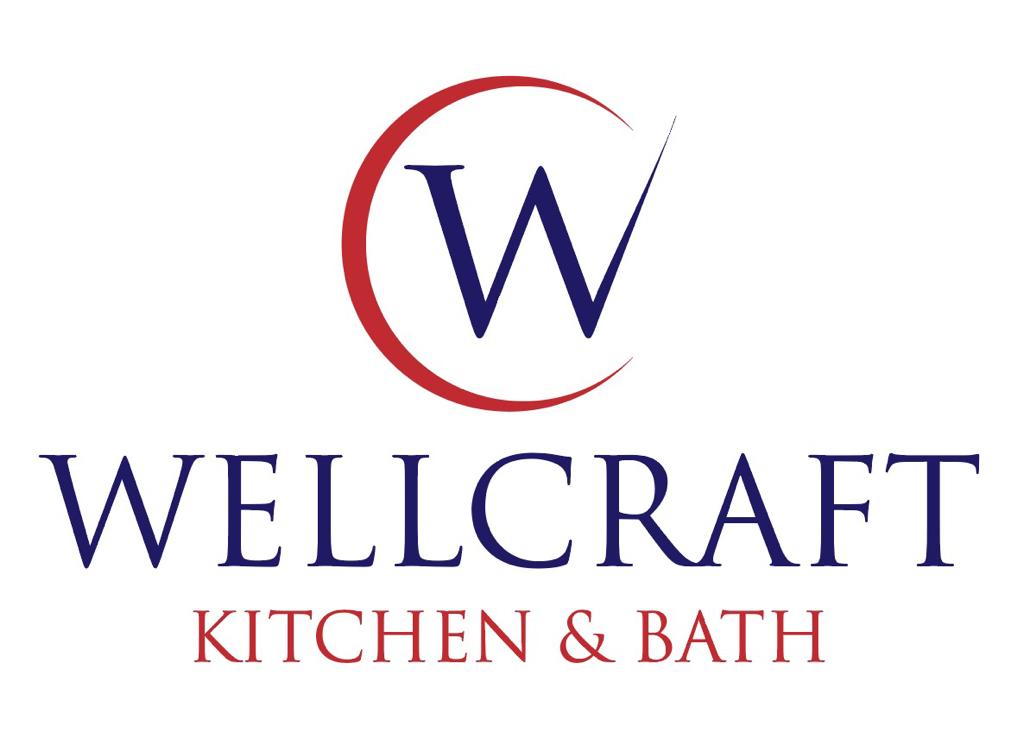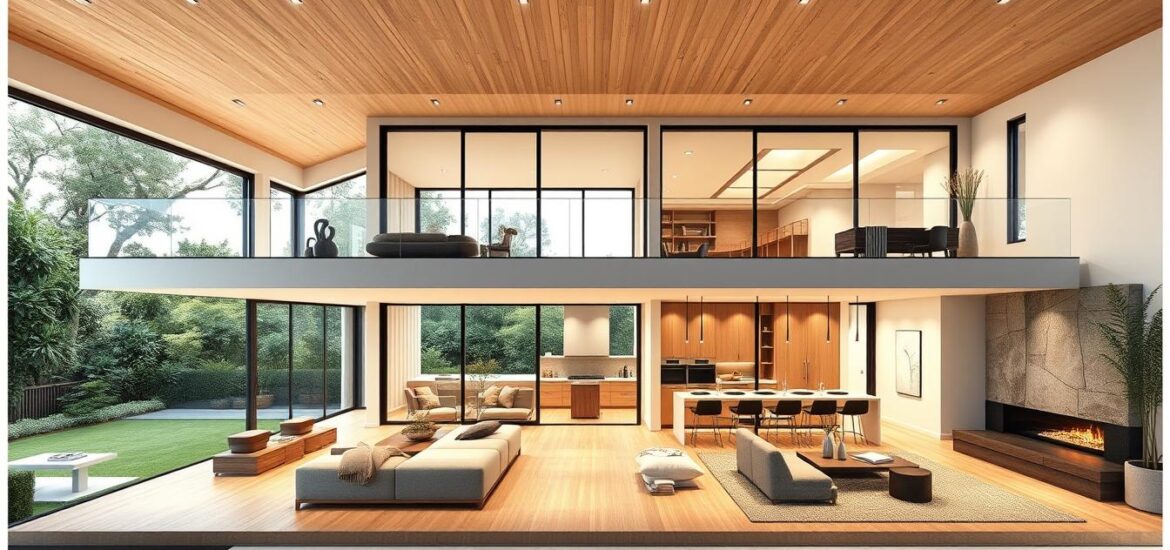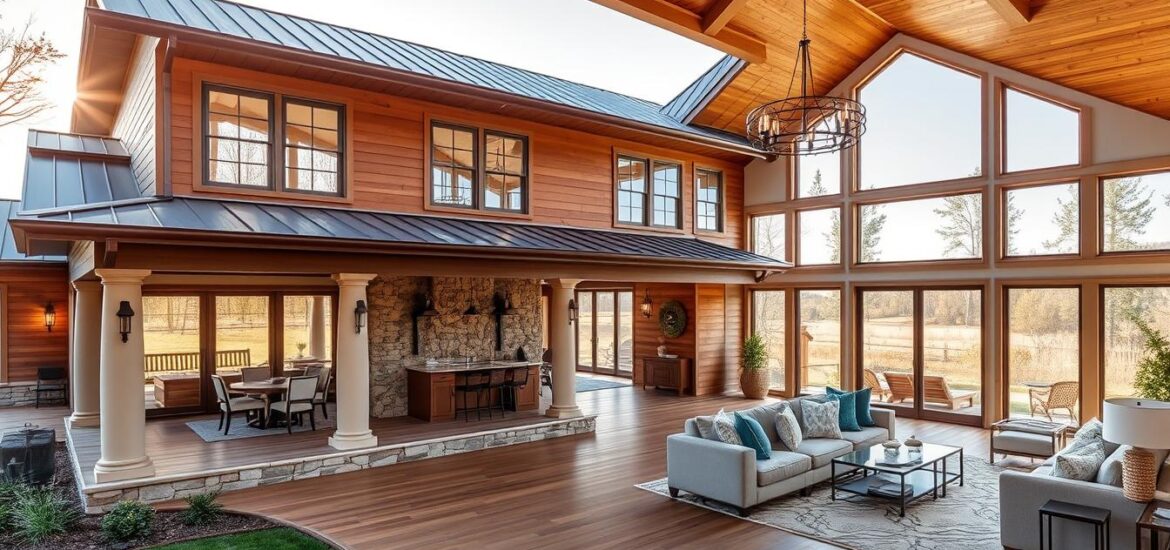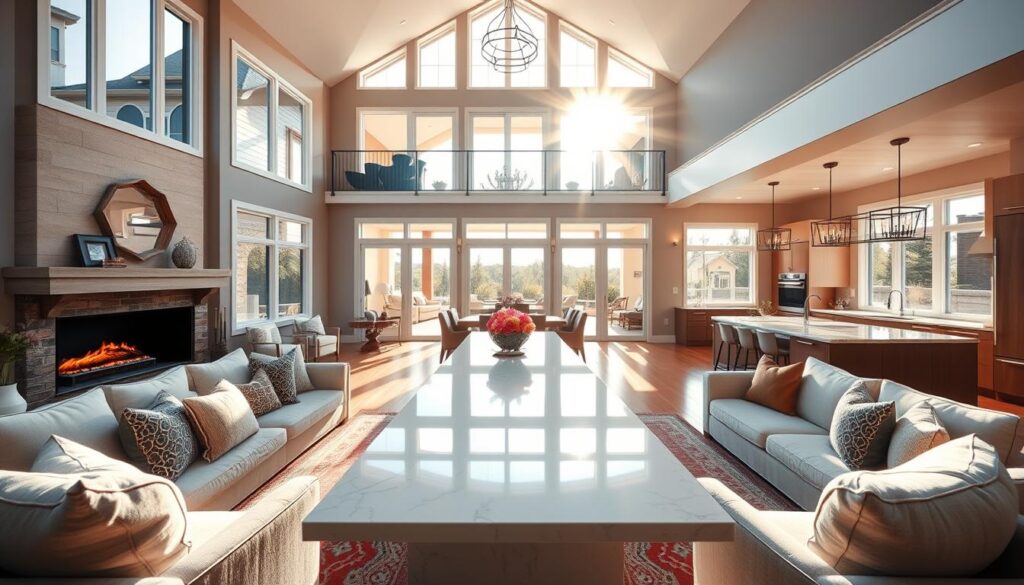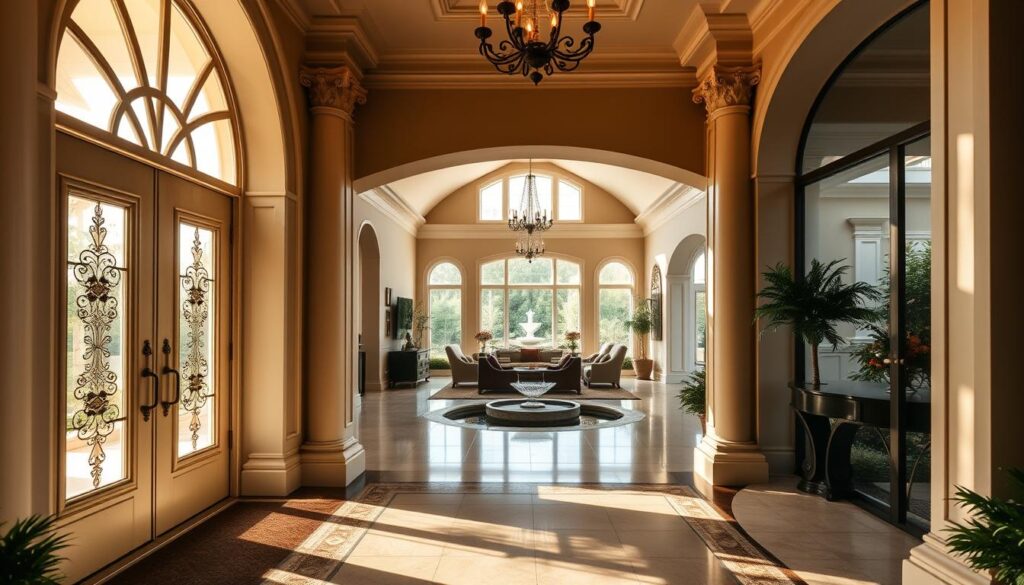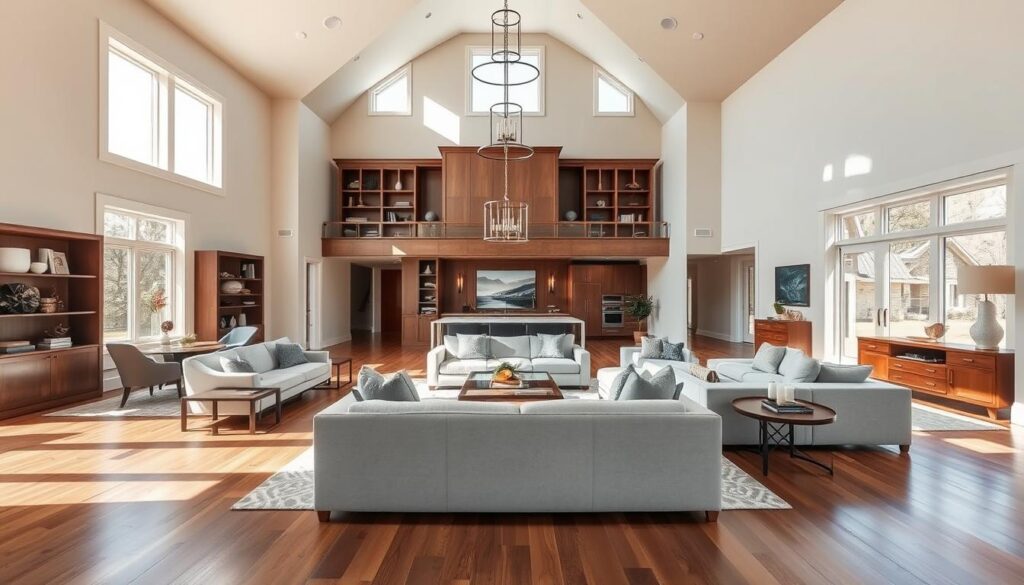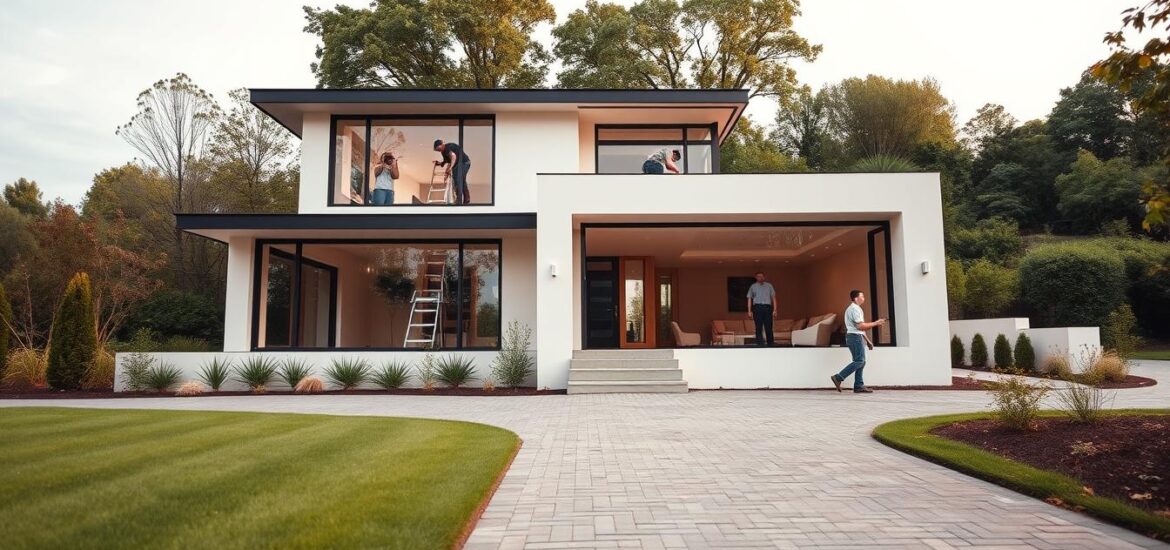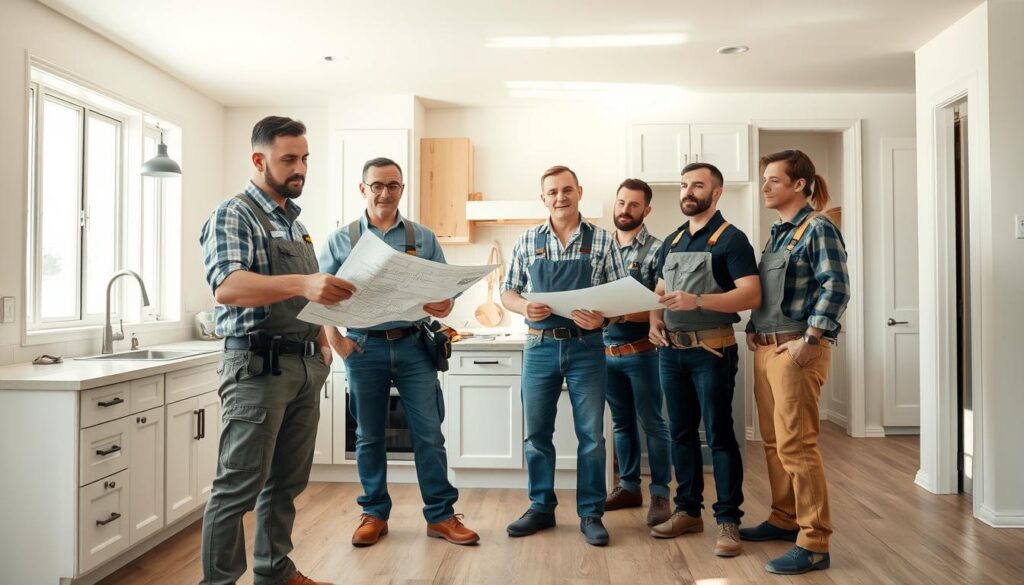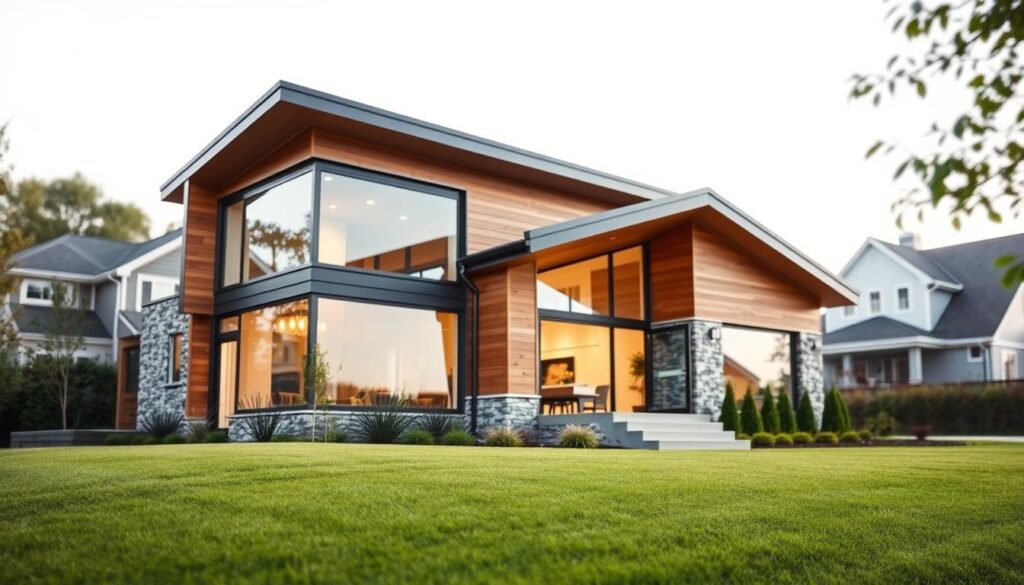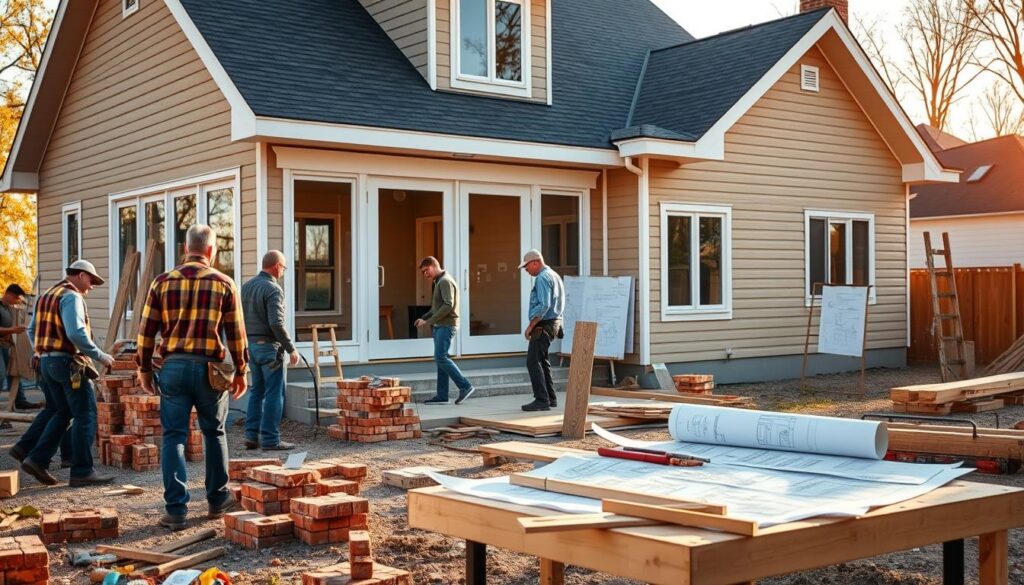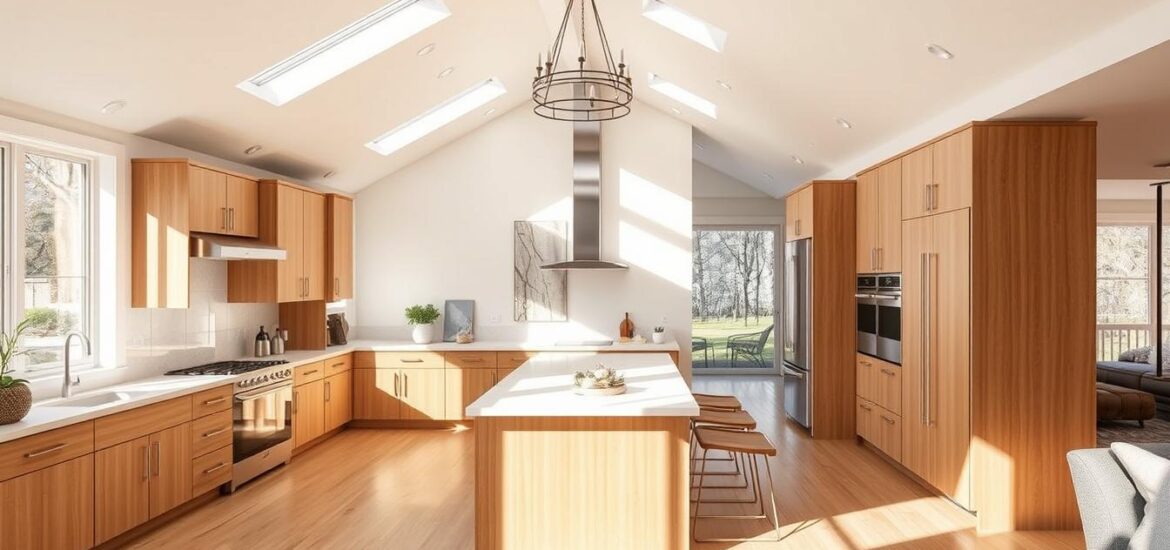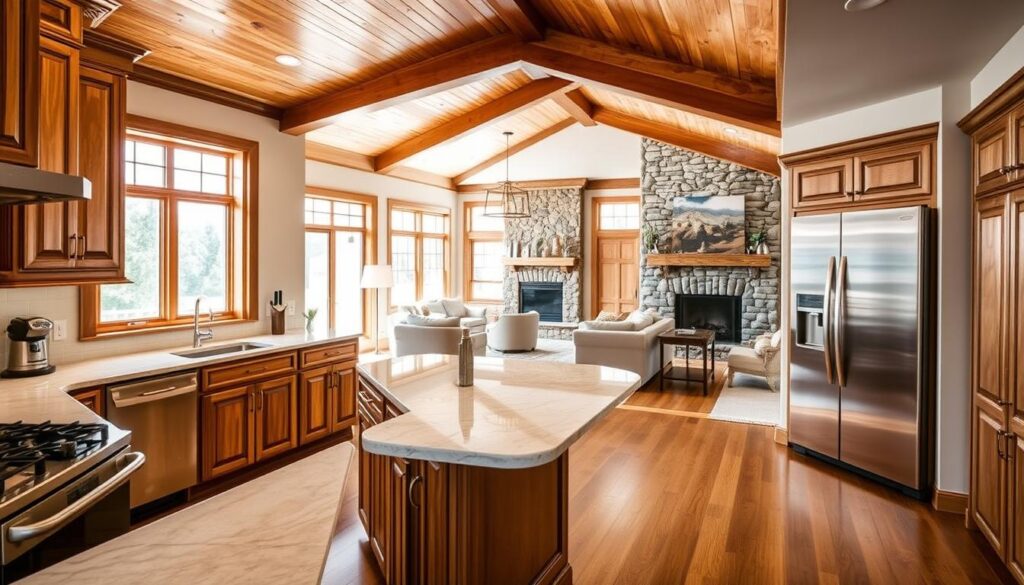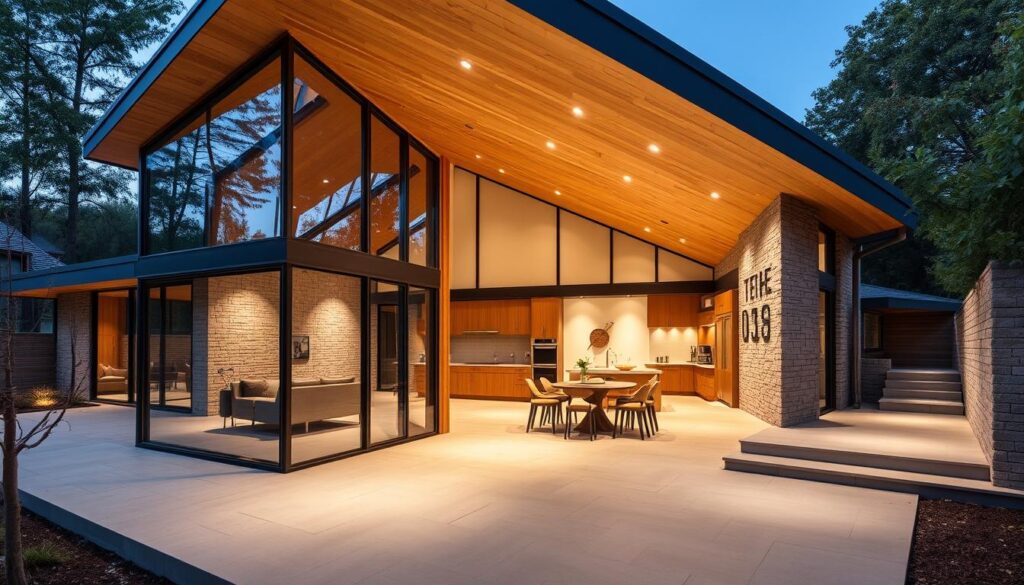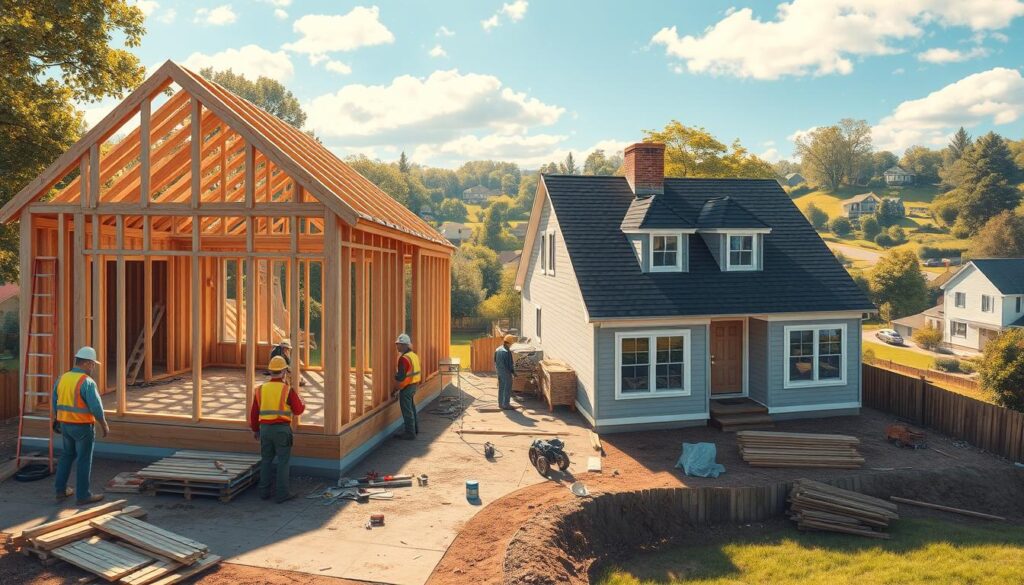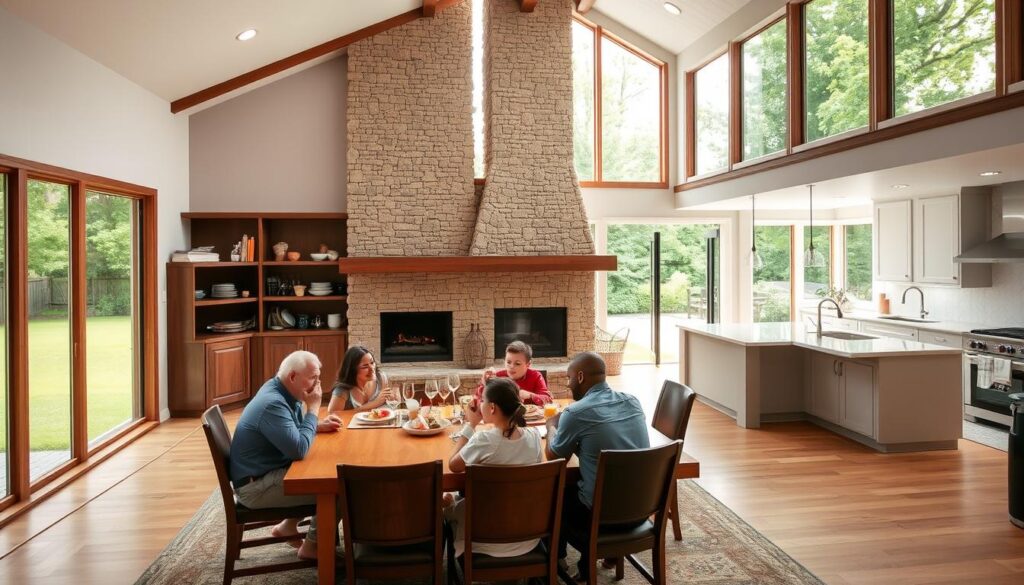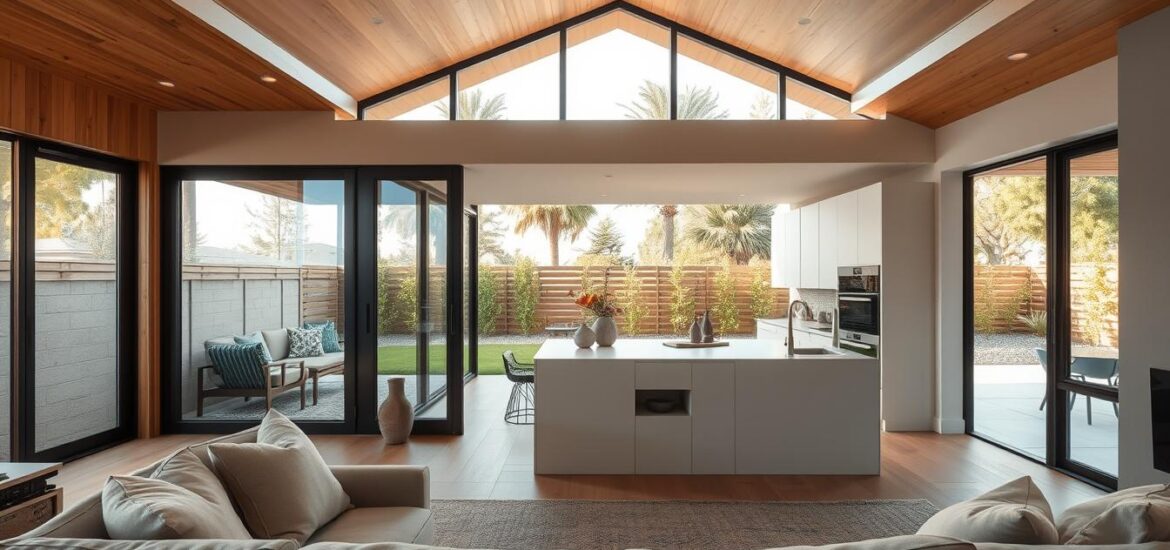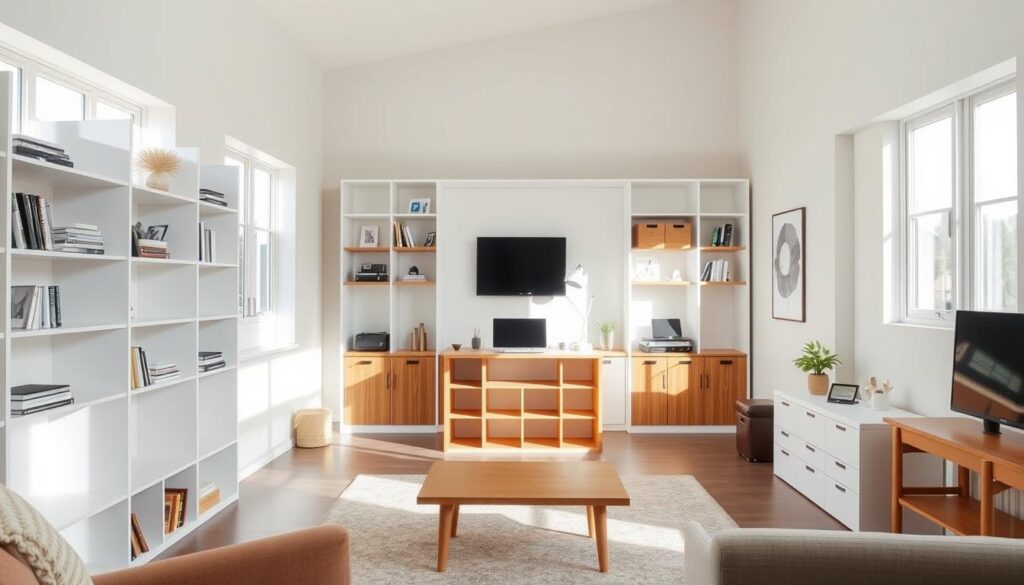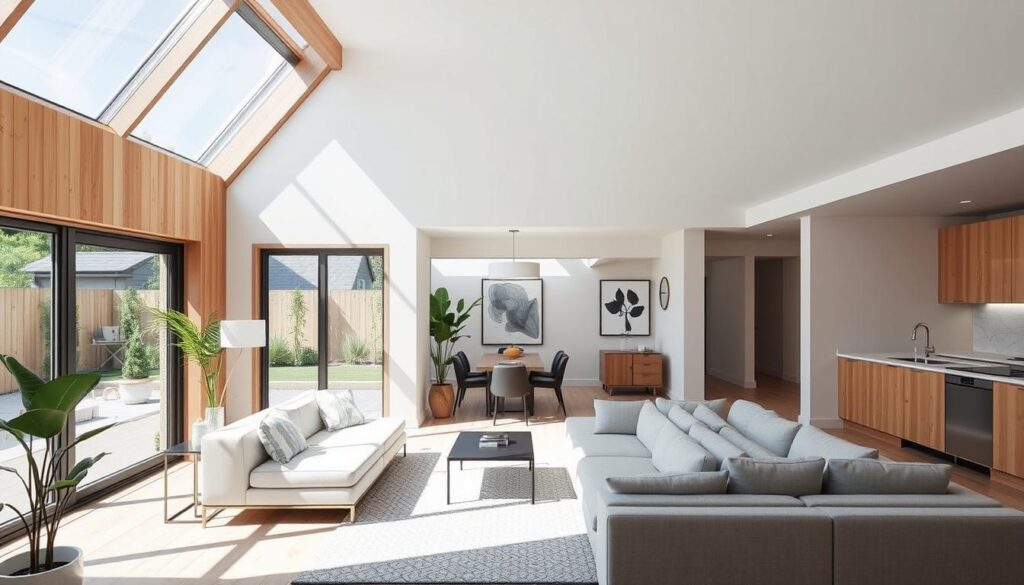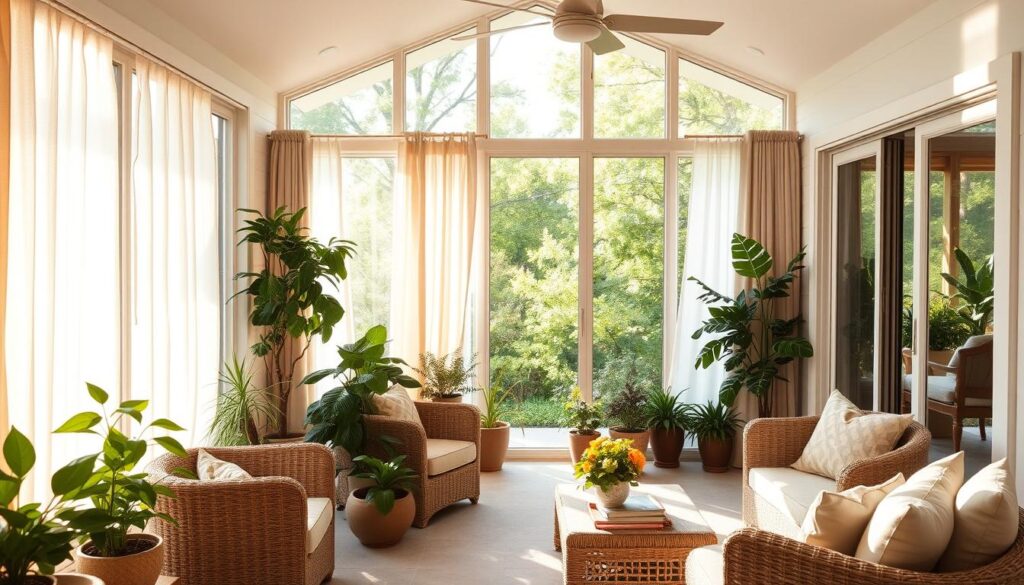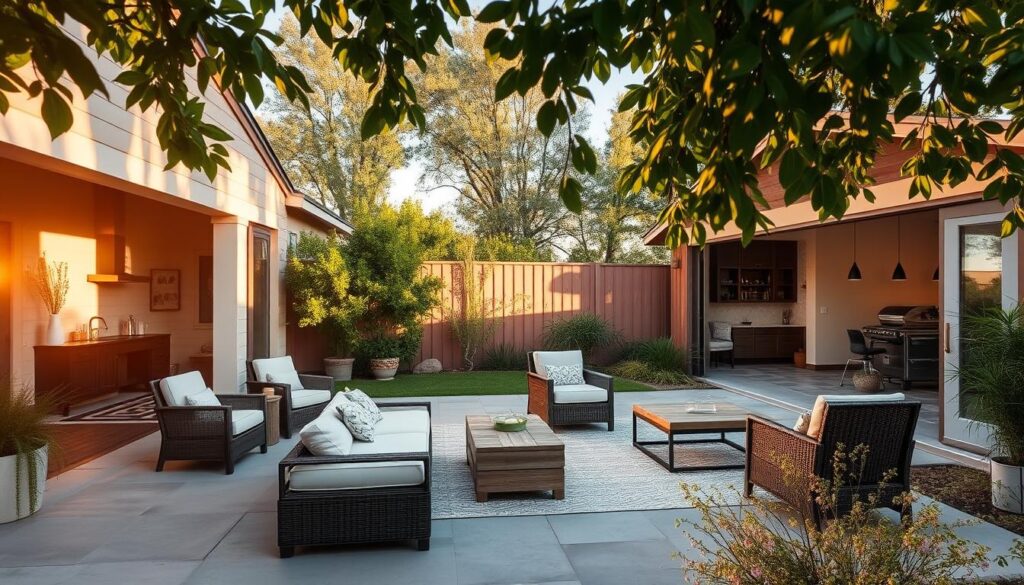“The home should be the treasure chest of living.” – Le Corbusier’s famous words capture why we transform our living spaces. At Wellcraft Kitchens, we believe your property should evolve with your life’s journey.
Families grow and interests change. Your current layout might not meet new needs. That’s where thoughtful expansions create lasting value. We help you add functional areas that enhance daily living.
Our team brings years of experience to every project. We guide you from initial concepts through final construction. Whether you need more kitchen space or a new living area, we ensure seamless integration with your existing structure.
Located in Sterling, VA, we serve homeowners throughout the region. You can reach us at +1 (703) 936-9704 or info@wellcraftkitchens.com. Visit our office at 23465 Rock Haven Way, Suite 125 to discuss your vision.
This guide shares our expertise in creating beautiful additions. We’ll explore how strategic planning transforms your property. Let’s build something extraordinary together.
Key Takeaways
- Home expansions adapt your living space to changing family needs
- Professional guidance ensures your project meets all requirements
- Strategic additions increase both functionality and property value
- Proper planning creates seamless integration with existing structures
- Experienced teams manage projects from design to completion
- Local expertise understands regional building codes and styles
- Quality construction delivers lasting enjoyment and investment returns
Understanding the Need for Home Expansion
As seasons change and families evolve, the spaces we call home must adapt to new chapters. What once felt spacious can suddenly seem cramped when life brings exciting changes.
We often see clients realize their current layout no longer supports their daily routines. This might mean needing an extra room for a growing family or creating a dedicated office space.
Adding square footage through an expansion proves more practical than relocating to a new property. It avoids the stress of moving while creating exactly what your lifestyle demands.
| Current Situation | Expansion Solution | Key Benefits |
|---|---|---|
| Growing family needs | Additional bedroom or play area | More functional living space |
| Remote work requirements | Dedicated office room | Improved work-life balance |
| Entertainment limitations | Open concept living area | Enhanced social gatherings |
The value of a well-planned addition extends beyond mere square footage. It’s about crafting environments that enrich your quality of life and increase your property’s worth.
We work closely to understand your unique requirements, ensuring your expansion addresses both current and future needs. This personalized approach transforms your living space into the home you’ve always envisioned.
house extension: Transforming Your Home
Your living environment should be a dynamic canvas that evolves alongside your life’s milestones. We’ve seen how the right home extension can completely reshape how families interact with their space.
The true value of this project extends beyond square footage. It creates areas where memories are made and daily life flows smoothly. Our renovation work focuses on enhancing both functionality and aesthetic appeal.
We approach each home extension with careful planning. The goal is seamless integration that feels like it was always part of your property. This thoughtful work ensures your investment adds lasting value and enjoyment.
Every project we undertake transforms cramped spaces into bright, functional areas. Families gain room to grow without the stress of moving. Your residence becomes the dream home you’ve always envisioned.
Exploring Different Types of Extensions
Every property has unique potential waiting to be unlocked through strategic additions. We help homeowners understand the various expansion options available for their specific layout. Choosing the right approach ensures your investment delivers maximum value and functionality.
Side Return and Rear Extensions
Side return additions utilize narrow passages beside terraced or semi-detached homes. These projects often transform cramped kitchen areas into bright, spacious rooms that become the heart of your residence.
Rear expansions stretch outward from the back of your property. They offer tremendous flexibility as single or double-storey structures. Many clients choose these to create larger living spaces or expanded kitchen areas that open onto gardens.
Double-Storey, Dormer, and Wrap-Around Options
Double-storey extensions add valuable square footage on multiple levels. This type works perfectly for growing families needing extra bedrooms or additional living areas without moving.
Dormer additions extend vertically from pitched roofs. They convert unused attic space into comfortable rooms like home offices or bedrooms. Wrap-around projects combine side and rear extensions for dramatic transformations.
Each property requires a customized approach. What works beautifully for one home may not suit another. We carefully assess your specific situation to recommend the ideal solution.
Planning and Budgeting Your Dream Expansion
Before any construction begins, careful financial planning ensures your vision becomes reality. We believe transparent budget discussions form the foundation of successful projects.
Understanding Costs and Feasibility
The cost of your addition varies significantly based on size, materials, and complexity. Simple room additions can start around $20,000, while extensive projects often exceed $100,000.
Proper planning at early stages saves both time and money throughout the process. We develop detailed plans before work begins to prevent costly surprises.
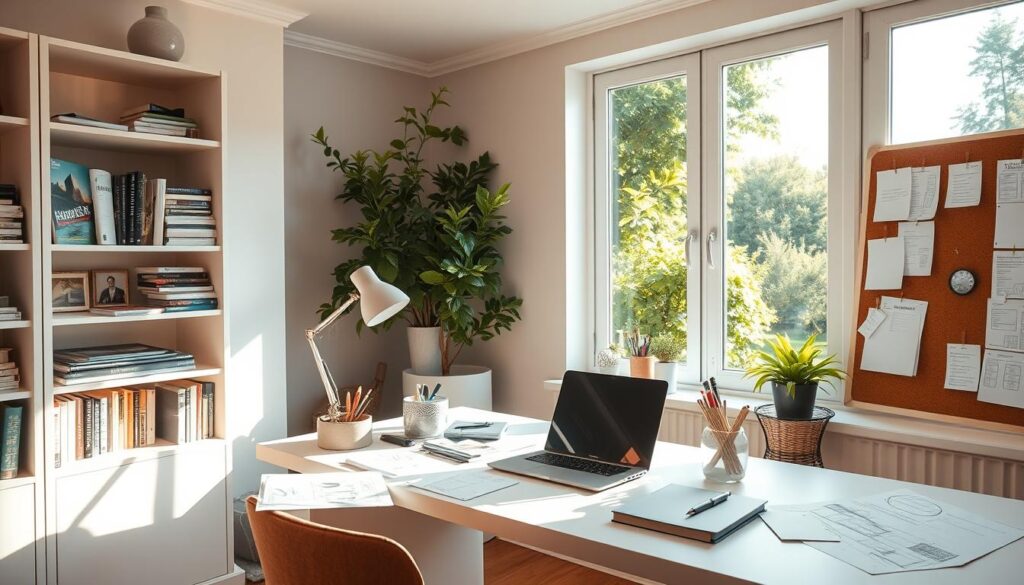
Setting a Realistic Budget
We create an “à la carte menu” of options showing cost implications of different choices. This approach helps you make informed decisions about where to invest your budget.
Bringing our team into planning conversations early allows for detailed cost breakdowns. We account for design fees, materials, labor, and inevitable contingencies.
| Project Scale | Cost Range | Planning Time | Key Considerations |
|---|---|---|---|
| Simple Room Addition | $20,000 – $50,000 | 2-4 weeks | Basic materials, straightforward design |
| Moderate Expansion | $50,000 – $100,000 | 4-8 weeks | Custom features, architectural plans |
| Extensive Addition | $100,000+ | 8-12 weeks | Complex design, premium materials, multiple spaces |
Effective planning requires adequate time investment upfront. Rushing this phase often leads to problems during construction. Our detailed approach maximizes the value of every dollar spent.
Designing with Functional Aesthetics
The magic of a well-planned expansion lies in how it balances visual appeal with practical functionality. We believe every design should serve your lifestyle while creating beautiful environments.
Our approach considers how you’ll use each area daily. This ensures your new space feels both inviting and purposeful.
Maximizing Natural Light and Ventilation
Proper orientation makes your addition feel bright and airy. We position windows and doors to capture optimal sunlight throughout the day.
Energy-efficient glazing and insulation keep your home comfortable year-round. Skylights can transform any room into a bright, welcoming space.
Enhancing Indoor-Outdoor Flow
Ground-floor additions benefit greatly from seamless transitions to outdoor living areas. Large glass doors create beautiful connections to gardens and patios.
This design approach extends your usable area in a natural way. Your kitchen or living room becomes part of a larger, flowing environment.
We focus on every part of the design process. Our goal is creating additions that feel like they’ve always belonged to your home.
Navigating Permits and Building Regulations
Navigating the regulatory landscape ensures your construction project proceeds without delays. We guide clients through every step of the approval process to make sure all requirements are met before work begins.

Local Guidelines and Compliance
Understanding local planning regulations early helps determine if your project needs formal permission. Key triggers include covering over half your land area or increasing overall height. For side additions, we verify width limits and material compatibility.
Our site evaluation assesses roof lines and existing footprints. This helps develop compliant plans that meet all building standards.
Tips for Securing Necessary Permissions
We always consider neighbor rights during the planning phase. This means ensuring privacy isn’t compromised and natural light remains unaffected. Boundary respect is crucial for maintaining good relationships.
When projects involve shared walls, we handle Party Wall Act notifications. Our team coordinates with building control officers for required inspections. This ensures all work meets safety and efficiency standards.
We make sure permissions are secured before construction begins. This protects your investment and ensures smooth project progression from start to finish.
Selecting Materials and Contractors
The success of your construction project hinges on two critical choices: the materials that form its physical substance and the contractor who brings the vision to life. Getting these elements right ensures your investment delivers lasting satisfaction.
We guide you through both decisions with transparent advice and proven expertise. Our goal is a seamless process from selection to completion.
Choosing Quality Materials
Superior building components might cost more upfront but save significantly on future upkeep. We balance initial expense with long-term performance for true value.
Our company sources from trusted suppliers with proven track records. This guarantees consistency across every project we undertake.
We make sure new materials harmonize with your existing structure. Whether matching or creating intentional contrast, the result feels cohesive.
| Material Type | Cost Range | Durability | Maintenance Needs |
|---|---|---|---|
| Standard Vinyl Siding | Low | 10-20 years | Moderate cleaning |
| Fiber Cement Boards | Medium | 25-50 years | Low; repaint periodically |
| Engineered Wood | Medium-High | 30+ years | Very low |
| Natural Stone Veneer | High | Lifetime | Minimal |
Partnering with Trusted Professionals
Selecting the right contractor is equally vital. We recommend checking references and reviewing past work to gauge expertise.
An experienced architect translates your ideas into practical plans. They collaborate with our building team to ensure specifications align with reality.
Our company manages the entire project timeline. We coordinate all tradespeople and make sure every standard is met.
Taking time to choose your partners pays dividends throughout the construction journey. The right team makes all the difference.
Popular Home Extension Concepts
Through years of experience, we’ve seen particular expansion concepts emerge as homeowner favorites. These approaches consistently deliver outstanding results for enhancing residential living.
Kitchen and Living Area Additions
Kitchen expansions rank among the most transformative projects we undertake. They create vibrant spaces where families gather and entertain daily.
Our designs often feature open-plan layouts connecting cooking and living areas. Large glass doors frequently open to gardens, creating seamless indoor-outdoor flow.
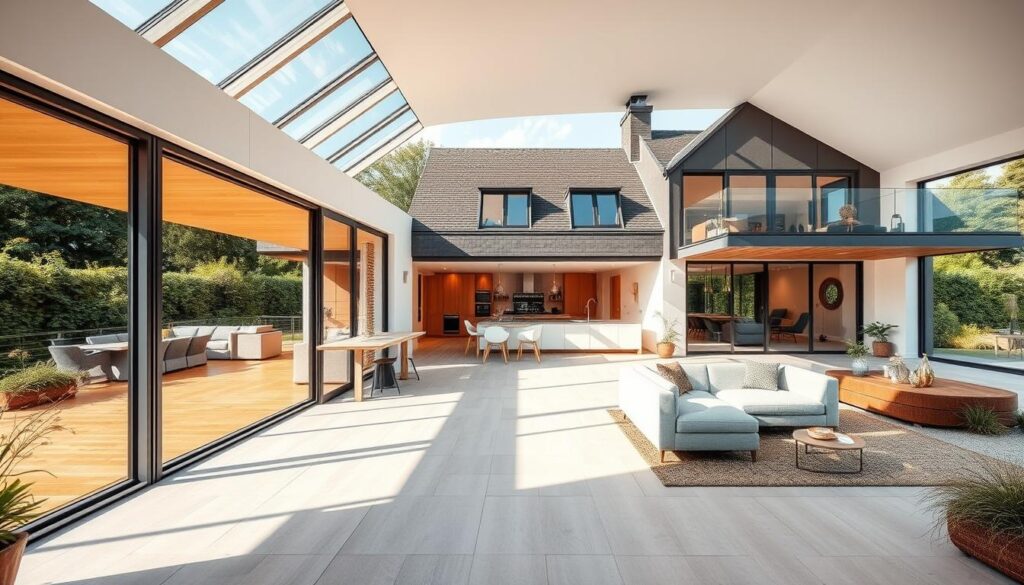
Loft Conversions and Garage Conversions
Loft transformations utilize unused attic space without altering your property’s footprint. They create valuable rooms like bedrooms or home offices.
Garage conversions represent cost-effective solutions when space isn’t used for vehicles. They can become new living areas, kitchens, or dedicated workspaces with minimal regulatory hurdles.
| Concept Type | Best For | Space Added | Approval Complexity |
|---|---|---|---|
| Kitchen Addition | Family gathering areas | Significant floor space | Moderate |
| Living Area Expansion | Entertainment spaces | Generous room area | Moderate |
| Loft Conversion | Extra bedrooms/offices | Full room addition | Low-Moderate |
| Garage Renovation | Cost-effective solutions | Existing space utilization | Low |
Managing Construction and Scheduling
The transition from planning to physical construction marks an exciting phase in your property enhancement journey. We approach each project with clear communication and realistic expectations about the construction timeline.
Staying on Track with Deadlines
Our construction process follows clearly defined stages, from site preparation to finishing touches. We provide regular updates as your project progresses through each phase.
Timely decision-making significantly impacts the schedule. When clients can make confident choices about materials and details, the work flows more smoothly. We make sure to maintain open communication throughout.
Handling Unexpected Challenges
Even with careful planning, unexpected things can arise during building work. Our experienced team has handled countless challenges from weather delays to hidden structural issues.
We recommend considering temporary relocation during major construction. This ensures your safety and comfort while allowing our team to work efficiently on your house extension.
Through each stage of the process, we take necessary steps to keep your project moving forward. Our site management practices minimize disruptions while maintaining quality standards.
Optimizing Space and Enhancing Property Value
We approach every project with dual objectives: enhancing your quality of life today while building lasting property value for tomorrow. This thoughtful planning ensures your investment delivers both immediate enjoyment and long-term financial benefits.
Creating Multi-Functional Areas
Smart design transforms every square foot into purposeful space. We eliminate wasted areas through strategic layouts that serve multiple functions. A single addition can work as a home office by day and entertainment area by evening.
Our designs incorporate flexible features that adapt to your family’s evolving needs. Built-in storage and movable partitions create versatile environments. This approach maximizes utility without requiring additional construction down the road.
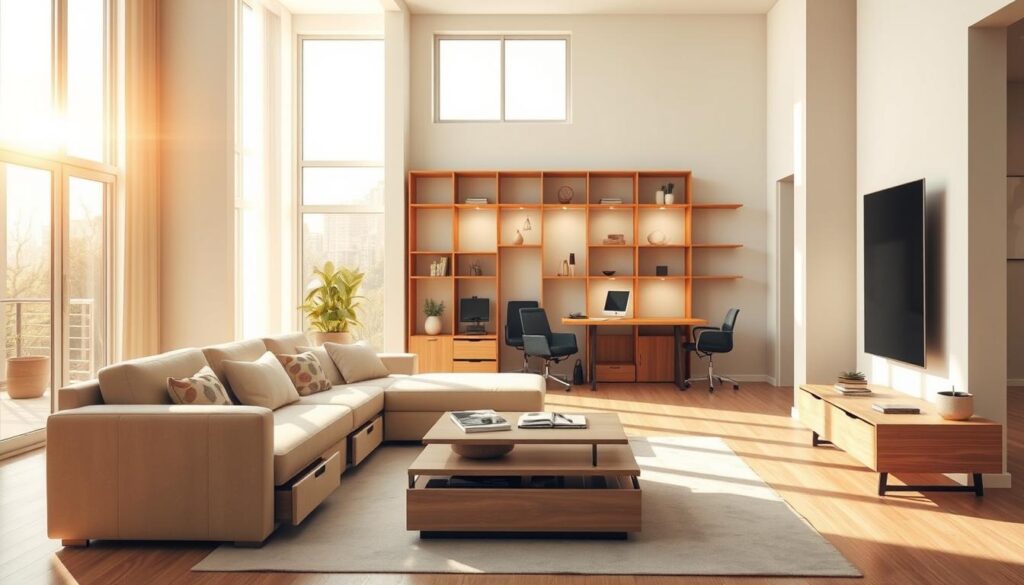
The financial benefits of well-planned additions are significant. Strategic renovations typically recover 60-80% of their cost in increased property worth. This makes them smarter than many other home improvement projects.
Different types of additions offer varying value returns. We help you choose the best option for your specific situation. The right addition balances personal enjoyment with market appeal.
| Addition Type | Average Cost Recovery | Lifestyle Benefits | Market Appeal |
|---|---|---|---|
| Kitchen Expansion | 70-80% | High daily use | Very strong |
| Living Area Addition | 60-70% | Entertainment space | Strong |
| Loft Conversion | 65-75% | Extra room creation | Moderate-Strong |
| Garage Renovation | 50-60% | Cost-effective space | Moderate |
This thoughtful approach to space planning creates homes that work better for your family now while building equity for the future. Every part of your addition should serve a purpose and add value.
Connect with Us
We’re ready to help bring your residential transformation ideas to life. Our team enjoys discussing new project concepts and turning your vision into practical plans.
Whether you’re exploring initial possibilities or ready to move forward, we welcome your questions. Our experienced team provides personalized consultations for every home enhancement project.
Call during business hours to discuss your design ideas. We’ll answer questions about our process and schedule consultations
Send us details about your building aspirations. We typically respond within one business day with helpful information.
Meet us in person by appointment Monday through Saturday, 9:00 AM to 5:00 PM. We’re closed Sundays to ensure focused attention for scheduled clients.
| Contact Method | Best For | Response Time | Details Needed |
|---|---|---|---|
| Phone Call | Quick questions & scheduling | Immediate | Basic project overview |
| Detailed plans & documents | Within 24 hours | Property specifics & goals | |
| Office Visit | Comprehensive review | Scheduled appointment | Bring ideas & measurements |
Our architect partners collaborate on creating detailed construction drawings. We look forward to discussing your home enhancement journey.
Conclusion
Embarking on a residential expansion journey requires thoughtful preparation and expert guidance. We’ve walked through the essential planning process that transforms your vision into reality.
Every successful project begins with clear goals and realistic expectations. Investing time in the early planning stage ensures your budget aligns with your aspirations.
Our team brings extensive experience to your home enhancement project. We guide you through each step, from initial design concepts to final construction.
Your property deserves the careful attention that protects your investment. Let’s discuss how we can help create the additional space your family needs.
FAQ
What is the typical timeline for a construction project like this?
Timelines vary based on the project's size and complexity. A single-storey addition might take a few months, while a larger, double-storey build could take longer. We provide a detailed schedule upfront and keep you updated every step of the way.
Do we need an architect for our renovation?
A> While not always mandatory, we highly recommend working with an architect. They help translate your ideas into functional, buildable plans, ensuring the new space is both beautiful and structurally sound, which can save time and cost during the building phase.
How can we maximize natural light in our new living area?
We love designing with light! Strategies include installing large windows, skylights, or glazed doors. Positioning the addition to capture sunlight and using light wells can dramatically brighten your kitchen or family room, making it feel more spacious.
What should we consider when setting a budget for our property addition?
It's crucial to plan for the total cost, including materials, labor, permits, and a contingency fund for unexpected issues. We help you set a realistic budget by outlining all potential expenses from the start, ensuring your dream project stays financially manageable.
How do you handle the required permits and local building regulations?
Our team manages the entire permission process for you. We're experts in local guidelines and submit all necessary paperwork to ensure your project is fully compliant, helping you avoid delays and ensuring a smooth construction stage.
Can you help with a loft or garage conversion?
Absolutely! Converting an underutilized loft or garage is a fantastic way to add a bedroom, office, or living space without expanding your home's footprint. We assess the structure and design a conversion that seamlessly integrates with your existing property.
